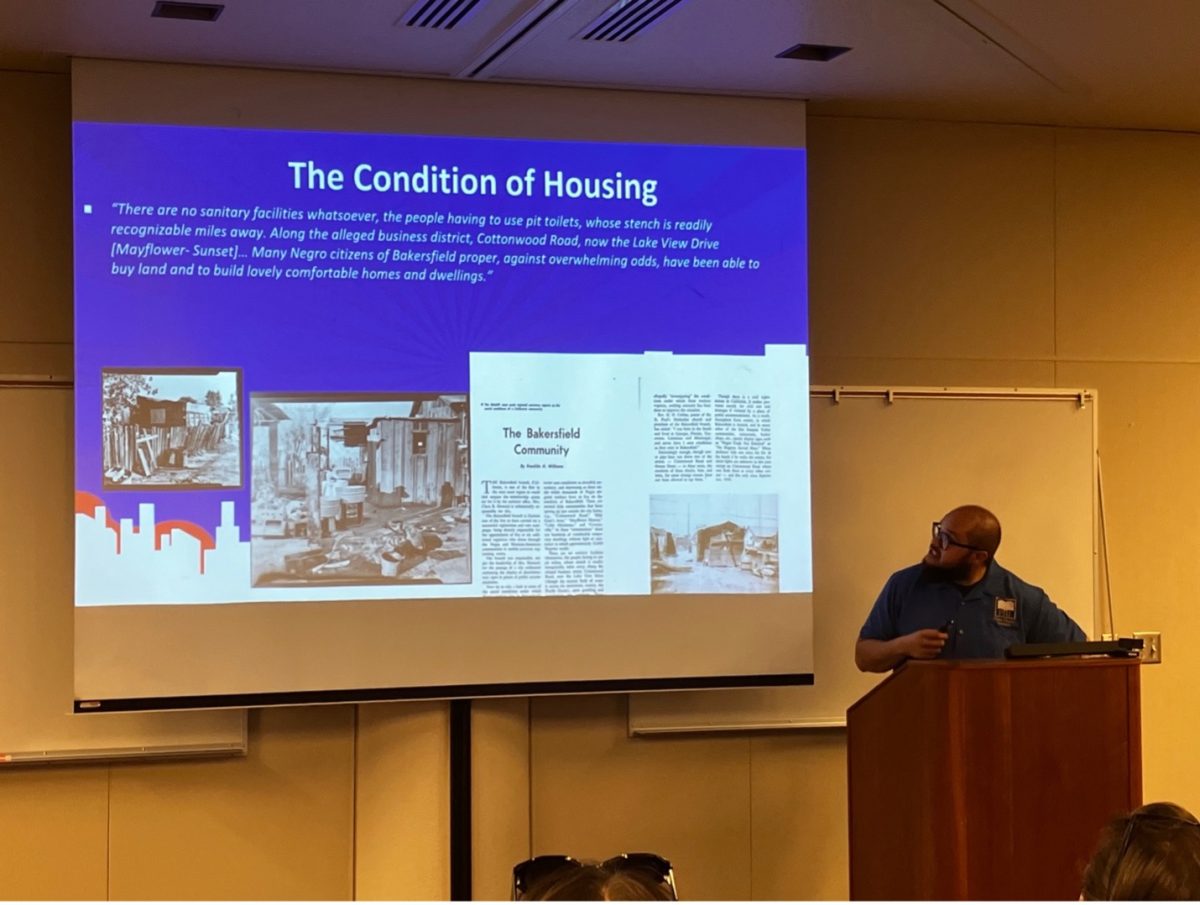Recent research uncovers how Bakersfield’s history of redlining may run deeper than anticipated.
On April 8th, Director of Historical Research Center (HRC) at California State University of Bakersfield (CSUB) Christopher Livingston, and specialist in housing discrimination and history of redlining, Donato Cruz, presented a thesis on Bakersfield’s History of redlining and housing discrimination.
The event began with Livingston giving a brief description about the HRC, and the resources it provides for students and faculty. Established in 2014, it has remained prominent in Bakersfield’s community by resurfacing historical artifacts that play a key role in kern county’s history.
Following the introduction, Livingston described how this thesis came to be. In 2015, he went to a storage facility that held real estate documents of a deceased agent named Claude Blodgett. There, Livingston found documents on “Mayflower,” a formally segregated neighborhood. “I pick up a file and see Mayflower, and I knew it I didn’t have to go any farther,” said Livingston. “I am taking it.”
Following Livingstons introduction, Gabriel Soria, A Bakersfield College (BC) janitor, performed a song with his guitar called “Redlining Blues.” His favorite part of the song he wrote was “and that’s how you got the redlining blues.”
After Soria’s performance, Cruz began to present his thesis. He began his portion of the presentation by defining red lining as “many types of historic race-based exclusionary tactics in real estate.”
Cruz presented multiple sources in his thesis, showing how real estate agents in 1938 were trained to racially segregate by The Federal Housing Administration (FHA). The instruction manual provided to agents at the time taught them that “no property shall be used or occupied or be permitted to be occupied by any person not of the white or Caucasian race.”
Following this statement, Cruz displayed a map showing the difference between racially segregated areas and white neighborhoods. This led Cruz to exploring eminent domain in Bakersfield highways. There, he learned how highways may have been used as a form of segregation. Using a map from 1938-1950, he was able to show how highways only contributed to these previously restrictive areas.
As Cruz continues his research, he is hopeful in finding more discoveries on the subject to share to Bakersfield residents.


